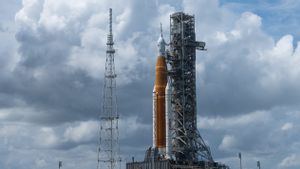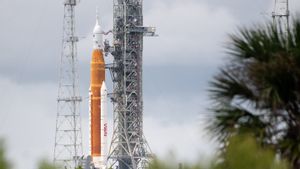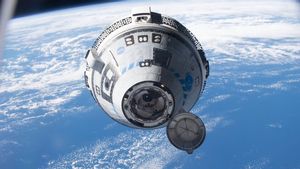JAKARTA Competition between space agencies continues. Especially after the plan to send crew to the Moon and land at a certain point that is claimed to be strategic because it has mineral resources.
China and the United States have identified a possible overlapping landing site at the Moon's south pole as it competes for limited lunar resources in the years to come.
NASA earlier this month identified 13 potential landing sites for the crewed Artemis 3 mission which is currently scheduled to launch by the end of 2025. This will be the first time Americans have set foot on the lunar surface in half a century.
While in a Chinese journal article about a possible landing site written by lunar mission commander Chang'e-4 Zhang He and others, they said there were 10 interesting places to visit.
Artemis 3 and Chang'e-7 both identified the site near the craters of enforcing, Haworth, and Nobile as their potential landing zones.
The Chang'e-7, named Chinese lunar queen Chang'e, will be opened and consists of orbiters, landers, mini-jumping probes and explorers, set to launch in 2024.
The overlapping site is partly the result of higher lunar altitude areas, good lighting, and proximity to shadow craters that might trap water-es. SpaceNews, first reported overlapping its US and Chinese landing destinations.
This could be a potential conflict between them. The reason is that the 2011 Wolf Amendment (Wolf Amendment) of the US government prohibits NASA from using government funds to engage in direct bilateral cooperation with Chinese governments and organizations affiliated with China without explicit permission from Congress and the FBI.
However, in 2015 President Barrack Obama's administration began something called the US-China Civil Space Dialogue, which allows discussions on space issues; which proceeds to President Donald Trump's administration.
A US State Department spokesman said that: The last US-China Civil Space Dialogue is in 2017. There are currently no plans for another civil space dialogue. If a civil space dialogue is scheduled, the United States will announce at the right time."
"We have and will continue to keep lines of communication open with Beijing, including the issue of the safety of spaceflight," the spokesman added, as quoted by the Daily Mail.
Several proposed sites within the region lie between some of the oldest parts of the moon, and together with permanently overshadowed areas, providing an opportunity to learn about lunar history through unprecedented lunar material, said Sarah Noble, Artemis' moon science leader for NASA's Division of Planetary Sciences.
NASA officials said they would narrow their list about 18 months before Artemis 3 so they could prepare for a potential landing at each location.
SEE ALSO:
Recently there was a war of words between the two countries related to space activity. Last month, NASA administrator Bill Nelson told a German newspaper that China was planning to take over the moon.
"We have to be very worried that China lands on the moon and says: 'It belongs to us now and you stay out'," he said.
China expressed its tidiness quickly over the statement. Zhao Lijian, a spokesman for China's foreign ministry, said in a statement: "This is not the first time the head of the US National Aeronautics and Space Administration has ignored the facts and spoke irresponsiblely about China."
"The US side is constantly building a smear campaign against China's normal and reasonable space efforts, and China firmly opposes such irresponsible statements," Lijian said.
Christopher Newman, professor of law and space policy at the University of Northumbria in the UK, told SpaceNews that this could be a real opportunity for collaboration and cooperation between the two giant powers, and would be an opportunity to show all the rhetoric about space exploration. more than geopolitical.
However, in reality it is not difficult to see why they both want the same place. This is the main lunar real estate for the use of resources there. This could be the first potential point of conflict over resources beyond Earth, said Newman.
A recent article in Beijing's Global Times said: "Aerospace observer also points out that as NASA is trying hard to revive its Apollo glory, China is working on an innovative plan to carry out its own self- manned moon landing mission."
The English, Chinese, Japanese, Arabic, and French versions are automatically generated by the AI. So there may still be inaccuracies in translating, please always see Indonesian as our main language. (system supported by DigitalSiber.id)















